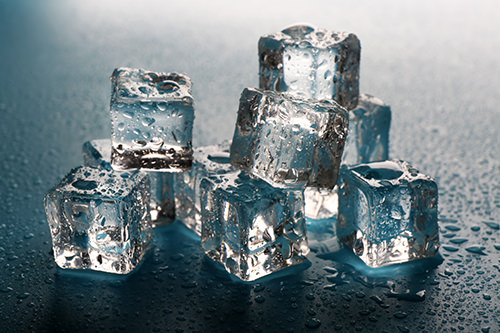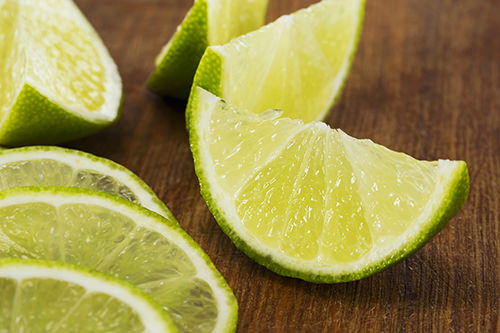The clock strikes 8pm. (Or 9, or 10). And suddenly, like snowflakes multiplying into a flurry, guests start arriving. Somebody brings Seven Layer Dip. Somebody else insists on “tweaking” your carefully constructed playlist. But no matter. It’s happening. It’s all finally happening. You’re throwing a party.
But just as you’re ready to sit back, let the guacamole take over, and assume the righteous duties of casual mingling (you are the King of this party, after all), somebody comes up to you and asks for another cocktail. “Oh my god, this Mojito was so good, how did you make it?” I found the recipe on VinePair, you fool. But you don’t say that. You strut dutifully back to your bar set-up and mix up another drink, watching enviously as your friends make Trump jokes and trade embarrassing Instagram stories, having the awesome time you had planned for yourself. The awesome time you created for them.
No more, party planners. No more shall you be chained to the liquor cabinet, slicing up another dozen limes or dosing out tequila by the jigger-ful. It’s time to learn the art of the pre-batched (as in no fuss, make-your-own-goddam-seconds) cocktail.
Batched cocktails are generally the province of the professional bartender, a way to set up a quantity of cocktails before service (a catered event, say), such that when serving time comes, you can do the minimum amount of assembly to get drinks to the people, and tips to your tip jar. And while it might seem simple (“I want to serve Whiskey Sours to 50 people, so I’ll just multiply the recipe by 50!”), there are some tricky rules for batching cocktails.
They’re worth learning, especially if you’re in the habit of entertaining and don’t want to spend all your time in your kitchen—or have to perpetually rely on self-service Rum and Cokes.
What to Use:
When pre-mixing, like goes with like. You can generally mix liquors with liqueurs in advance, or fruit juices with other fruit juices. But don’t add any fruit juice to spirits until the day of. Anything with eggs or dairy isn’t a great candidate for batching, as eggs require incredible amounts of shaking to incorporate, and even then, they’ll probably separate out over time. Simple syrup can go into the base spirits mix.
Also remember if you’re batching anything that requires soda (like Gin Gimlets) or bubbly (like a French 75), the fizzy stuff will have to be added either just before the party (for, like, a big fizzy punch) or per cocktail.
When to Pre-Mix:
The goal is to get as much as you can get done ahead of time—so you can spend more time freaking out about what to wear, what to say, all those terrifying things—but you can’t pre-batch days and days ahead. Well, that’s not exactly true. Again, mixing “like with like,” you can mix liquors/liqueurs together days in advance. You should not do this with juice. Add your juice or mixed juices to the booze part of your batch the day of the party. It’ll stay fresher and brighter tasting than if you’d put it in days (even the day) before.
How to Adjust Your Recipe:

As for expanding the recipe itself, it’s better to think in terms of proportions rather than trying to multiply quantities, though you can do that, too—multiply your ingredients (in ounces) by whatever target number of cocktails you are going for (TIP: give yourself some wiggle room and allow for a couple extra cocktails). Then take that number of ounces per ingredient and convert it into cups—since that’s how you’ll be measuring for batched cocktails.
Easier is doing it this way: take the recipe for one cocktail into proportions, e.g. 1.5 ounces rum to 3 ounces guava juice would be a 1:2 ratio of rum to guava juice, which you can use with any kind of measurement (even eyeballing it, though ideally something a bit more technical). Basically doing a bit of math earlier saves you more math, later.
Dilution:
When a bartender shakes or stirs a cocktail over ice, that ice isn’t just cooling the drink; it’s diluting it, gently. This isn’t about watering a drink down. It’s actually essential to the balance of the cocktail itself (if you drink a Negroni that hasn’t been stirred with ice, you’ll understand, though, yeah, don’t do that). Depending on how much labor you want to put into serving your guests, you can either stir or shake the pre-mixed drink over ice for each person, OR account for dilution by adding a bit of water to the pre-mix itself.

This is a bit more technical, since you wont’ want to over-dilute. Basically you need a scale and a sample cocktail: combine all liquid ingredients for one drink and weigh. Now shake/stir that drink over ice, whatever’s called for in the recipe, and weigh again. Now you have the amount of dilution, or water added, per drink. Multiply that by the number of drinks you want total, and add that amount of water to the other pre-mixed ingredients. Yes, this does feel a bit more like SAT prep than party planning, but it’ll help you create a balanced cocktail—and all you have to do, if you dilute, is make sure your pre-mix is super chilled before letting your guests serve themselves. No shaking, stirring, or ice shaving required.
Fresh Ingredients:

You can’t really pre-muddle herbs and fruit for a cocktail. Mint bruises and will turn brown. Some things you can’t really do ahead, and with fresh ingredients, it’s best to leave these for actual service. (Even fruit juice shouldn’t be added until the day of, see “What to Use” above.) You CAN, however, pre-slice things like limes and lemons a couple hours in advance. Tedious work, but get a couple friends to come to the party early so they can help you; treat them to a glass of wine, and you may actually have fun with prep work.
Nothing’s Perfect:
The more you batch, the better you’ll get at it, but don’t freak out if your first attempts aren’t a perfect replica of a single-recipe drink. TIP: A good, and admittedly really fun, option is doing a practice round—preparing a small batch of cocktails for you and a couple friends some Sunday Funday. You’ll get a sense for what equipment you need, whether your dilution quantities worked, and what kind of drinks you prefer to batch. That way, at your next party, you won’t be stuck behind the bar and can actually run interference when your friend tries to play Coldplay for the eighth time.
A Few Good Batched Cocktail Options:
- Margarita
- Sidecar
- French 75
- Negroni
- Boulevardier
- Manhattan
- Sazerac (this would require an Absinthe rinse per glass)
